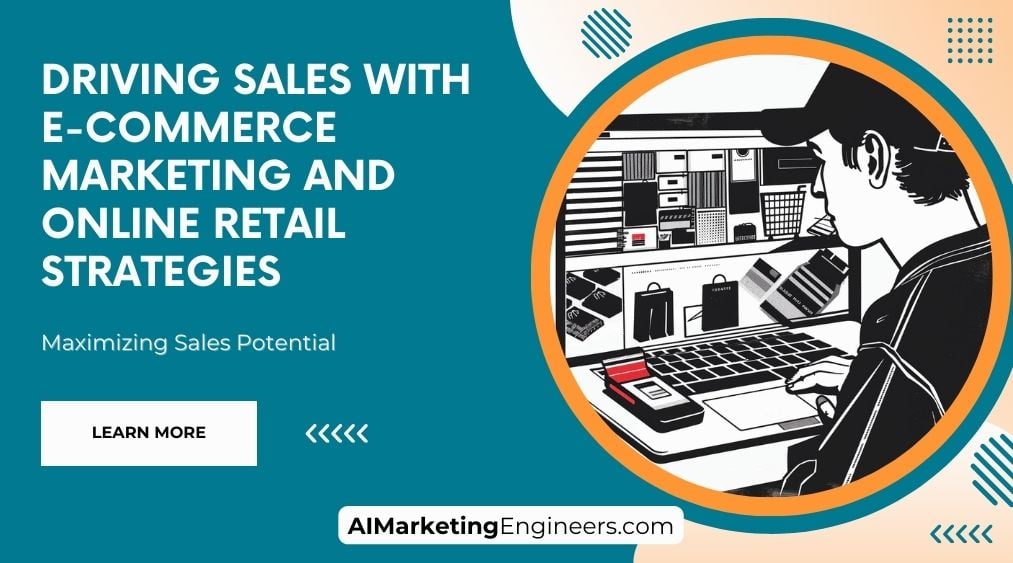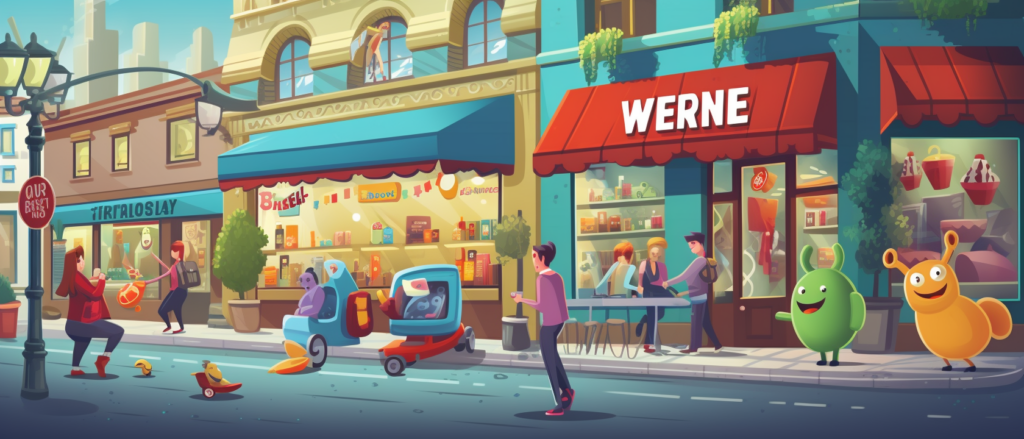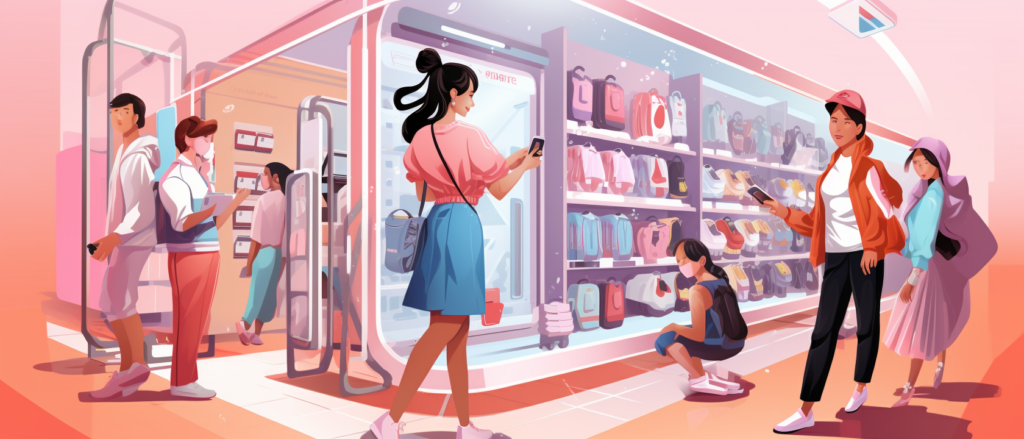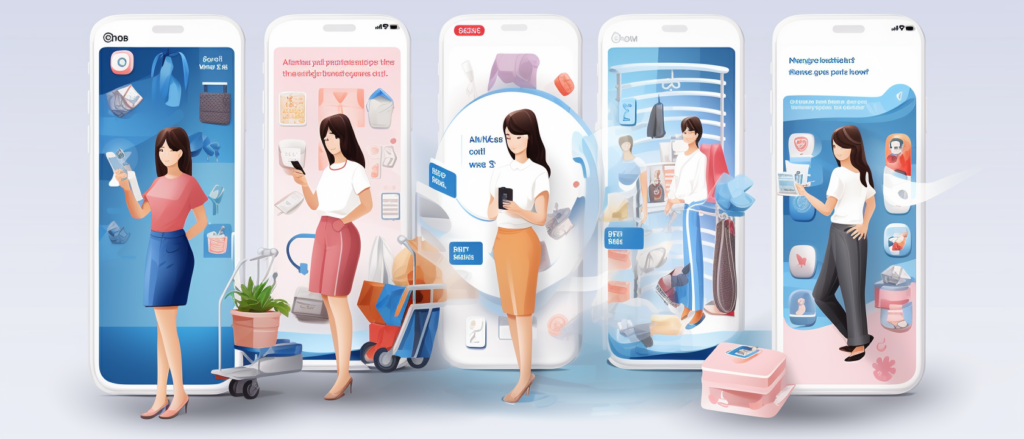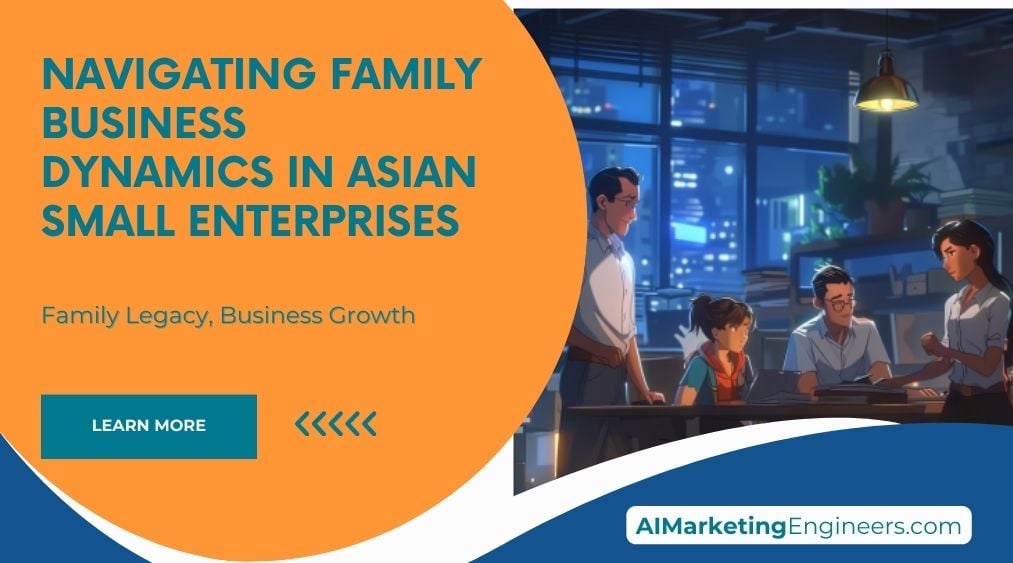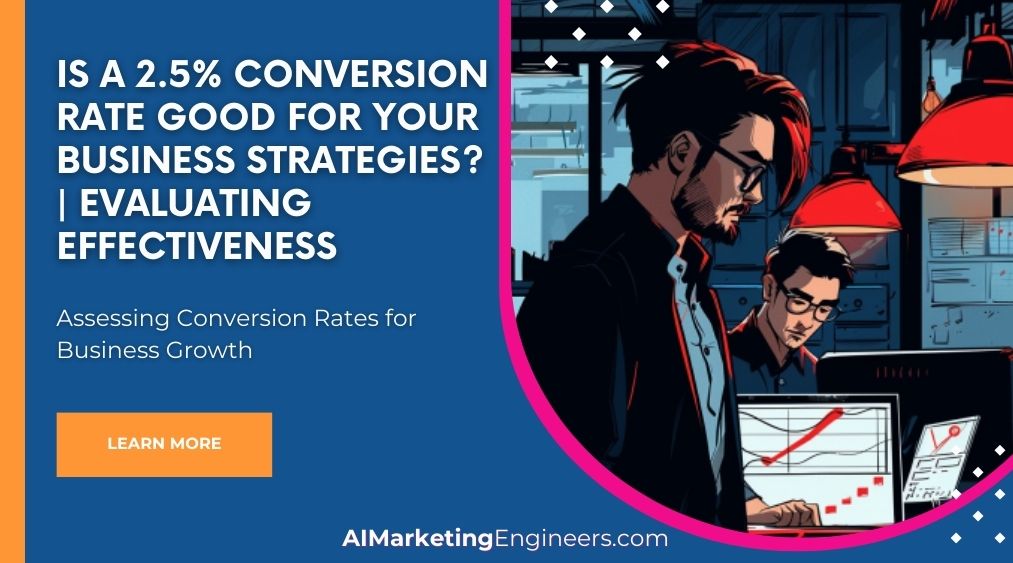Key Takeaways
✅ Leverage Augmented Reality and Personalized Experiences: By implementing augmented reality (AR), you give customers a chance to engage with your products on a whole new level. Personalization, such as tailored loyalty programs, can turn a one-time buyer into a lifelong fan. Companies using personalized experiences have seen a sales uplift of up to 20%.
✅ Optimize Online Presence and User-Generated Content: Strengthen your online footprint by honing your product pages and using social media, email, and ads to draw in traffic and sales. In a market where 92% of people trust peer recommendations over advertising, user-generated content like reviews and posts isn't just nice to have—it's essential.
✅ Implement Omnichannel Strategies and Retargeting: An easy and consistent shopping experience, no matter where your customer engages, can increase your purchase rates by over 300%. And with retargeting, you can remind those who've left your site without buying to come back and seal the deal, heightening your chances of conversion by tenfold.
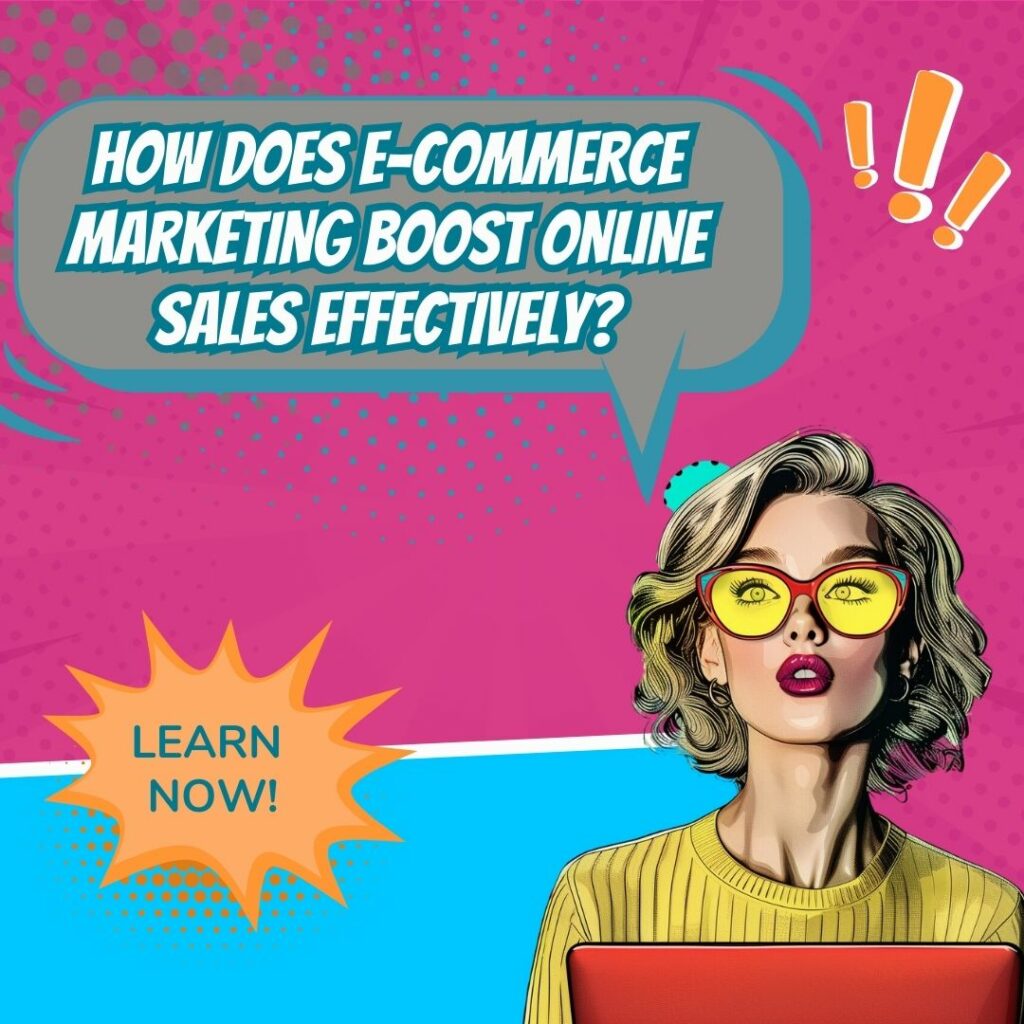
Introduction
Have you ever wondered what it takes to transform browsers into buyers, and occasional buyers into repeat customers? With global online retail sales hitting new heights every year, understanding the ins and outs of e-commerce marketing is the golden ticket to business growth. But let's face it, not all strategies are created equal. Are you ready to dive in and learn how to cut through the noise and captivate your audience?
This article isn't just a rundown of tactics. It's a treasure trove of modern approaches that bring you up to speed with what's working right now in the digital market space. From the allure of augmented reality shopping experiences to the compelling power of authentic customer testimonials, we'll provide you with the tools to not only attract but also retain and grow your customer base.
By the end of this read, you'll be armed with the knowledge to push your sales figures higher than ever before. Embrace the promise of valuable insights and practical guidance that can revolutionize your online storefront. Ready to make your mark? Let's get started.
Top Statistics
| Statistic | Insight |
|---|---|
| Global E-commerce Market Value: Expected to total $6.3 trillion in 2024, over $7.9 trillion by 2027. | These figures convey the vast scale and rapid growth of the e-commerce sector, signaling a rich landscape of opportunities for retailers. |
| E-commerce Share of Retail Purchases: 20.1% in 2024, expected to grow to 22.6% by 2027. | This trend highlights the steadily increasing preference for online shopping, urging businesses to enhance their e-commerce strategies. |
| Mobile Commerce Sales: Predicted to account for 62% of all retail sales by 2027. | Mobile commerce dominance underscores the necessity for robust mobile optimization of online retail platforms. |
| Amazon's E-commerce Market Share: Holds a 37.6% slice, the highest among e-commerce companies. | Amazon’s dominance exemplifies how large platforms can shape consumer habits and expectations in e-commerce. |
| Consumer Online Shopping Reviews: 99% of customers seek out reviews when they shop online. | Almost universal reliance on reviews implies a crucial role for customer feedback in purchasing decisions and trust-building. |
Understanding the Customer Journey Through Full-Funnel Marketing
In the ever-evolving world of e-commerce, defining a clear path for your customers from discovery to purchase is vital. Full-funnel marketing does just that. By crafting messages tailored to where the customer is in their journey, businesses increase the chances of turning curious clickers into loyal customers. Awareness is the seed from which all potential sales grow, making it essential to showcase the brand far and wide. But how do you keep potential buyers engaged? Through consideration tactics, remaining in their line of sight with carefully placed reminders. Lastly, the conversion stage, which focuses on turning interest into action, can make or break the sales cycle. Emphasizing these stages could significantly enhance your marketing’s effectiveness.
Boosting Traffic and Trust with SEO and User Experience
It's a simple equation: if customers can’t find your site, they won’t buy from you. This is where Search Engine Optimization (SEO) comes into play. By aligning your website with the terms potential buyers are searching for, you increase your visibility and likelihood of attracting organic traffic. But what happens after they land on your site? That's where User Experience (UX) optimization takes the spotlight. A site that's a joy to use keeps people browsing, reduces irritation, and can turn casual visitors into lifelong customers. By fine-tuning site navigation, ensuring fast loading times, and offering engaging content, businesses can capitalize on every click.
Capitalizing on Influence: Affiliate Marketing and Influencer Partnerships
The value of word-of-mouth shouldn't be underestimated, especially when it comes from trusted sources. Incorporating affiliate marketing and influencer partnerships into your strategy can be a game-changer, acting as a powerful endorsement for your brand. Imagine tapping into influencers' devoted audiences, who hang onto their every word. According to recent data, these strategies aren’t just popular; they drive real results, with brands witnessing significant returns on every dollar spent. By weaving these partnerships authentically into your marketing tapestry, sales aren't just a possibility—they're an expectation.
Building Trust Through User-Generated Content and Social Proof
Nothing sells a product like the glowing review of someone who's already bought it. User-generated content (UGC) and social proof act as the internet’s version of a thumbs-up from a friend. Encouraging customers to share their experiences through reviews or photos isn't just a trust-builder—it transforms satisfied customers into a compelling sales force. And these aren't just feel-good moments; they're social signals that boost your brand's reputation and directly influence buying decisions. Harnessing UGC effectively could lead to a rich repository of persuasive content that speaks volumes more than any branded ad ever could.
Creating Memorable Brand Experiences with Experiential Marketing
In a world where ads are ubiquitous, experiences stand out. Experiential marketing campaigns offer a unique avenue to connect with customers and create a lasting impression. These interactive events can range from in-person product demonstrations to online VR experiences, drawing customers into the brand's story. The key to their success lies in their memorability—create a standout event, and you create a lasting brand advocate. While the initial goal is engagement, the true outcome of a successful experiential marketing campaign is an increase in sales, as those wowed by the experience become eager to purchase.
Harnessing the Power of Retail E-Commerce Tools
In the toolkit of modern e-commerce marketing, retail e-commerce tools are the Swiss Army knives—versatile and indispensable. These tools offer multifaceted benefits, from broadening your product's reach to providing seamless purchase options that meet customers wherever they are. They play a critical role in re-engaging customers who may have previously shown interest, employing tactics to remind them of what they've left behind. By integrating these tools, businesses not only drive awareness of their offerings but also facilitate ease of purchase—turning the vast online commerce space into a navigable nexus for customer interaction.
In the high-stakes game of e-commerce, the right strategies can make all the revenue difference. By embracing these tailored approaches, businesses can forge deeper connections with customers, streamline the path to purchase, and ultimately achieve competitive success in the digital marketplace.
AI Marketing Engineers Recommendation
Recommendation 1: Leverage Personalization to Drive Engagement and Sales: Data shows that a personalized shopping experience can lead to a tremendous lift in sales. According to a recent study, companies that excel at personalization generate 40% more revenue from those activities than average performers. Integrate personalization engines into your e-commerce platform that use customer data to suggest products, tailor email marketing campaigns, and provide customized offers. The key is to use data not only to predict what they might want to buy next but also to personalize their entire journey with targeted content and a uniquely catered browsing experience.
Recommendation 2: Utilize Social Commerce as a Seamless Extension of Your E-Commerce Strategy: With the increasing integration of shopping features on social media platforms, embracing social commerce is a trend too significant to ignore. As of now, an estimated 60% of people discover products on Instagram, and platforms such as Facebook, Pinterest, and TikTok are quickly following suit in optimizing their features for direct sales. Make it a strategy to routinely update your social media profiles with purchase-enabled posts and consider using influencer partnerships to expand your reach. Incorporating AR technology for virtual try-ons on platforms like Instagram can also enhance customer experience and facilitate buying decisions.
Recommendation 3: Invest in a Mobile-First Approach to Capture Evolving Shopping Behaviors:
Mobile E-commerce sales are expected to account for 54% of total e-commerce sales by the end of 2021. Ensuring your online retail space is mobile-friendly is no longer optional – it's crucial. This means optimizing your website for mobile viewing with fast load times, using large, finger-friendly buttons, and ensuring a secure and streamlined checkout process, including a variety of mobile payment options. Moreover, developing a dedicated mobile app can greatly enhance the shopping experience and foster customer loyalty with push notifications and exclusive deals for app users.
Relevant Links
- Marketing Secrets Unveiled: WeChat's Role in Chinese Digital Dominance
- Short-Video Ascendancy: Commanding China's Internet with Douyin & Kuaishou
- Breaking Into Germany's Market: Outshine on Google.de with Our SEO Expertise
- SEO Success in South Korea: Propel Your E-Commerce to New Heights
- The Crucible of Trendsetting: Harnessing South Korea's Video Marketing Phenomenon
Conclusion
As we look ahead to a future where e-commerce dominates the retail scene, it's clear that businesses eager to thrive must be quick on their feet. With a projection of online sales hitting the staggering $7 trillion mark by 2025, it's not just about having an online presence but about being strategic and proactive in your approach. Cutting through the noise requires a toolbox of innovative marketing strategies, and if there's anything to take away from our discussion, it's that these strategies are not just optional—they are essential to your survival and growth.
Whether it's using a full-funnel marketing approach to cast a wide net and slowly reel in your customers, or optimizing the user experience to ensure visitors not only find you but also enjoy their time on site, every touchpoint is an opportunity. Think about it: Have you maximized the potential of SEO for your e-commerce site? Are you leveraging the influential power of affiliates and content creators? And let's not forget the credibility that comes from glowing customer reviews and user-generated content.
Remember, in 2021 alone, brands saw more than 170 million transactions thanks to affiliate programs—that's a testament to the reach and power of well-crafted partnerships. We're living in an era where experiences often speak louder than advertisements, so why not use experiential marketing to create those memorable brand encounters? And finally, the integration of retail e-commerce tools goes beyond just visibility—it's about creating seamless, inviting pathways for customers to discover and engage with your brand. With these strategies in hand, the potential to not only drive sales but also to build a loyal customer base is immense.
FAQs
Question 1: What is e-commerce marketing?
Answer: E-commerce marketing is all about getting people to know about, buy stuff from, and stay loyal to online stores. It uses tricks like SEO, email chatter, and ads that pop up when you search for stuff.
Question 2: Why is e-commerce marketing important?
Answer: It's a big deal for online shops because it's how they find their crowd, show off their brand, get more website visitors, make more sales, and keep customers coming back for more.
Question 3: What are the benefits of optimizing an e-commerce website for SEO and user experience?
Answer: When you make your website easier to find and nicer to use, more people show up, they stick around longer, trust you more, and they're more likely to come back. Plus, it helps you stand out from the crowd.
Question 4: How can affiliate marketing help e-commerce brands?
Answer: It's a smart way to stretch your marketing dollars. You reward folks who hook you up with sales. In 2021, it made a ton of waves with billions of clicks and heaps of sales.
Question 5: What is the role of user reviews in e-commerce?
Answer: Reviews are like gold. They make or break people's decisions to buy because almost everyone reads them and trusts them as much as a friend's recommendation. Brands need to make dropping a good word or two super easy for happy customers.
Question 6: How can experiential marketing enhance e-commerce?
Answer: It's all about giving your customers something to remember, making them feel special and connected to your brand, either through cool online experiences or real-life events.
Question 7: How can personalized landing pages improve e-commerce marketing?
Answer: They make your online visitors feel like you know exactly what they want, which can make them more likely to buy stuff.
Question 8: What is the importance of mobile-friendliness in e-commerce?
Answer: Everyone's on their phones these days, so if your online store is easy to use on mobile, you're golden. It means more happy customers and more sales.
Question 9: How can email marketing and loyalty programs boost sales?
Answer: They're like your secret weapons for getting customers to come back for more. They're key for bumping up sales and keeping your customers close.
Question 10: What is the role of social media and influencer marketing in e-commerce?
Answer: They're the loudspeakers for your brand. They can make a big splash, get people talking, and get those sales numbers up. Social platforms are the stage, and influencers are like the rock stars that can draw in the crowd.
